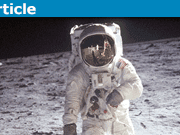Interview with Astrophysicist D H
Meet a Mentor is a series to help you get to know your wonderful Mentors better.
Constructive questions and comments are welcome!
Today we meet: D H
Give us a brief history of D H
I spent my childhood in Minnesota, the first nine years in Minneapolis and the last nine on a farm. I went to college in upstate New York, obtaining a bachelor’s degree in Applied and Engineering Physics. I’ve taken a number of graduate classes afterwards, but I’ve never felt compelled to get an advanced degree once I started working.
I first worked in suburban Maryland, mostly as a NASA contractor, but also for NOAA and DoD. I’ve been in Houston for the last 26 years, again working with various NASA contractors.
I met my wife during that time in Maryland. We have three sons. All of them are adults now and all are out of the house.
How did you become interested in physics?
It was the very tail end of first grade, on May 25, 1961. I heard Kennedy’s speech that night on the nightly news. It was awe inspiring. More importantly, that speech forced huge changes in the how the education system fostered and taught science and math. Those changes lasted throughout the 1960s and into the 1970s, right when I was going to public schools.
Can you tell us about your career in the aerospace industry?
It started as a fluke. I had been accepted to a PhD program with plans to study statistical physics. My plans changed two days before graduation. I was the best man at a wedding, 150 miles from school. The groom’s parents received a phone call — for me. My advisor decided that that was the best time to tell me I wasn’t going to be graduating. I took five liberal arts courses in my freshman and sophomore years, three in my junior and senior years. He was of the opinion that the split should have been four and four. After the wedding, a friend who had graduated the previous year asked if I still wanted to go to grad school. “You’ll be facing seven years of that nonsense. Or you could leave it all behind. I could help you get a job. Tomorrow.”
I took his offer, and I got the job.
That first job was very educational. It was supposed to be a simple job, safe for a freshout of dubious quality.
A team of three had left a subproject because their work was finished except for the boring documentation. That was to be my job. The team had created ream upon ream of test output to prove they were finished. I started diving into the code a week or so after my start date, and I immediately started getting very confused. A week or so later I relayed this growing confusion to my friend and our boss, both of whom assured me the problem was most likely me and my lack of understanding.
“Just keep reading.”
Another week or so later I was getting less confused. The problems I was seeing were real. I was almost sure of it. It was finally time to look at that so-called test output. Within hours after my first look, I had the entire management chain, plus the company lawyer, crammed in my little office. Not one bit of that “proof by thickness” test output showed working code. Some of those reams of output reported compilation failures, but the vast majority was pile after pile of core dumps. The company fessed up to NASA. Instead of a boring post-production documentation job, I got to work on a high priority blank slate problem.
Later on, with another employer, I worked on another blank slate problem, software for weather satellite ground stations to be put all over the world. I spent several months in communist China, several more in Argentina. Argentina was tense. The country was on the verge of holding their first free election after years of alternating between left and right wing dictatorships. The tension built and built as the election drew nearer. We left, job unfinished, after one too many sleepless night (our hotel was right across the street from Raul Alfonsin’s campaign headquarters) and after being accosted by the military police one too many times.
We returned to finish the job after the election and subsequent celebrations were over.
My move to Houston was another unplanned adventure. I added artificial intelligence to my repertoire with my fourth employer. My work garnered some interest at Johnson Space Center, so my employer loaned me to their Houston office for six months. I became infected with the human spaceflight bug during that time. I transfered to Houston 26 years ago, and here I remain. (Different employer, but still human spaceflight.)
What topics in aerospace are you most closely watching?
Private space and the next step in human spaceflight.
The next step in human spaceflight is sending humans to an asteroid orbiting the Moon. What asteroid orbiting the Moon? It’s not there yet. The plan is to capture one robotically and bring it back to lunar orbit.
Do you have a favorite thread, story or memory on Physics Forums?
Not really. There are so many, and so many of the better threads tend to be short.
What are some of your favorite spots or things to do in Houston or Texas in general?
A good thing to do anytime in Texas is to go out to eat. The Houston-Galveston area is full of very good restaurants of all sorts. A good thing to do in Texas anytime between June and September is to go from Texas to ~Texas.
I take a daily hour-long walk through the woods and down to the beach. Two of my three lady friends think these walks are utterly romantic. The third, my wife, thinks the woods are full of vines that bite, brambles that bite, fire ants that bite, mosquitos that bite, flies that bite, snakes that bite, and in the swamps along the way, gators that bite. The turnaround point isn’t so much a beach as it is a muddy shelf on a poison-filled bayou. To her it’s hot, humid, nasty. “No thanks, I’ll pass. Take the dogs for your walk. See you in an hour.”
If you could have lunch with living physicist, who would it be and why?
Just one? Two, please? One would be Neil DeGrasse Tyson. The other would be Shane D. Ross. Most everyone knows the former, most do not know the latter.
Tyson is one of the few popularizers of science who tries hard not to mystify. He knows the boundary between physics and metaphysics. He also is one of the few physicists and astronomers who values human spaceflight.
Ross is the young torchbearer of the work largely started by Jerry Marsden on applying the concept of invariant manifolds to space travel. Ross worked with Martin Lo on developing the concept of the “Interplanetary Superhighway”.
What do you see as the biggest problem in science education today and what are some ideas on how to solve it?
Politics at odds with reality.
Education suffers whenever political ideology butts heads with reality. A few examples: evolution is real, vaccinations save lives, and decimating the public education budget will not solve any country’s economic woes. The current anti-intellectual / anti-education political gestalt in the U.S. is but the latest incarnation of this oft-recurring problem.
The solution is obvious: Vote the idiots out. Unfortunately, too many of us like to vote the idiots in.
What are some of your favorite movies, books and musicians?
I used to like science fiction, but today’s science fiction is mostly science-free. It’s just sword and sorcery, sometimes magically on an alien planet. The old standard bearers are long gone, the killer Bs have all retired.
Occasionally I’ll try to read serious literature. It took me four tries to get through The Magic Mountain, three to get through Gravity’s Rainbow. This turns out to be good training for reading what would otherwise be an obscure and dense mathematics text. The Magic Mountain helped me get through Rudin, for example. I’m holding off on attacking Ulysses until I finally decide to attack differential geometry and manifolds. I’m hoping the synopsis isn’t something like “A person walks around abstract mathland. Nothing practical happens.”
Thanks for participating D H!
I have a BS in Information Sciences from UW-Milwaukee. I’ve helped manage Physics Forums for over 22 years. I enjoy learning and discussing new scientific developments. STEM communication and policy are big interests as well. Currently a Sr. SEO Specialist at Shopify and writer at importsem.com








is there a chance I can have a personal mentor here?I think you have a severe misunderstanding of what a "mentor" means on this forum. It is not a personal tutor or advisor.
Zz.
is there a chance I can have a personal mentor here?No, we are a community, we learn together :)
is there a chance I can have a personal mentor here?
I mean to have him as personal mentorNo, D H is a community mentor :)
I mean to have him as personal mentor
can I have a mentor too?You can't claim a mentor. Mentor's are for everyone :)
can I have a mentor too?
That's what I would call false economics, Monsterboy.
By way of analogy, there's a readily accessible but untapped reservoir of gold right here on our planet. The value of that gold calculated as the estimated amount of gold in that untapped resource times the current price of gold yields an astronomically high number. So why does it remain untapped? Simple: Calculate the cost of refining that gold and you'll get a number that is many times higher. The gold is right there for the taking but nobody's taking it because it doesn't make economic sense to do so. That untapped reservoir is the gold dissolved in the world's oceans.
Moral of this story: Just because something has a calculable value doesn't mean it is worth that value. In the case of the gold dissolved in the oceans, the true value is zero.
Those commodity metals such as iron and nickel essentially have zero economic value until we can find a way to use them in space. Bringing them back down to Earth doesn't make economic sense at the present time, and probably won't make economic sense for a long, long time. They're commodity metals because they are readily obtained right here on the surface of the Earth.
With regard to your earlier question, NASA has funded lots of studies on how to prevent a collision between an asteroid and the Earth. It is, or at leas has been, standard fare for masters or PhD theses. Studies are cheap. As far as I know there is no clear cut winner on which technique is best.
Those numbers are impressive, but they do not represent the value of such an asteroid in an orbit.
The earth's crust has on average ~5ppb of gold, or ~20mg/m^3 (gold mines have up to 3 orders of magnitude more). At a price of ~$50/g, this corresponds to $1/m^3 or 1 billion US-dollar per cubic kilometer. This does not include any other metals.
Does this mean that a km[sup]3[/sup] has a value of billions of dollars? Certainly not. Even on earth, the effort to extract the metals is significant.
Do we know for sure about resources that can be used? I was always under impression most asteroids are just geologically boring silicates, not much different from the gravel we have everywhere here.http://en.wikipedia.org/wiki/Asteroid_mining#Extraction_techniques
In 1997 it was speculated that a relatively small metallic asteroid with a diameter of 1.6 km (0.99 mi) contains more than $20 trillion USD worth of industrial and precious metals.[6][32] A comparatively small M-type asteroid with a mean diameter of 1 kilometre (0.62 mi) could contain more than two billion metric tons of iron–nickel ore,[33] or two to three times the annual production of 2004.[34] The asteroid 16 Psyche is believed to contain 1.7×10^19 kg of nickel–iron, which could supply the world production requirement for several million years. A small portion of the extracted material would also be precious metals.
Great bio, thanks D H.
@DH Are there any plans in NASA to find methods to deflect hostile asteroids from crashing into earth?
In my thread ,you said space elevators can make asteroid mining economical, is there any estimate about how strong the material used to build it should be? are there any known materials that have properties which come close to those required for space elevators? and it was great to get to know you :)
Of course not. "If we knew what it was we were doing, it wouldn't be called 'research,' would it?":smile:
The first things to be mined in space will be stuff like water and methane. Beyond geosynchronous altitude, even water and methane are currently worth their weight in gold for the simple reason that that is how much it costs per kilogram to get anything to geosynchronous orbit. Methane is fuel. In addition to being necessary for life, water is oxidizer. Water is 8/9 oxygen on a per unit mass basis. Mining fuel and oxidizer in space will drastically reduce the cost of getting beyond low Earth orbit.Interesting point. To be precise water requires electrolysis before being used as an oxidizer (after that we already have both hydrogen and oxygen, and technically we don't need methane), but I assume we do the electrolysis using photovoltaics – and I see how in this context having a "free" water on the orbit makes sense.
Do we know for sure about resources that can be used?Of course not. "If we knew what it was we were doing, it wouldn't be called 'research,' would it?"
On paper, there are vast amounts of resources just waiting to be utilized in space. In practice, who knows? The path from "on paper" (Technology Readiness Level 1) to "in practice" (Technology Readiness Level 9) can be long and torturous. This mission represents the starting point, not the ending point, in moving space mining from TRL 1 to TRL 9.
The first things to be mined in space won't be commodity metals such as iron and nickel. They're commodity items because they are easily obtained right here on Earth. It won't even be precious metals or rare earths. The present costs of space transportation alone make it economically unfeasible to mine even the most valuable minerals in space and bring those materials back to Earth for profit.
The first things to be mined in space will be stuff like water and methane. Beyond geosynchronous altitude, even water and methane are currently worth their weight in gold for the simple reason that that is how much it costs per kilogram to get anything to geosynchronous orbit. Methane is fuel. In addition to being necessary for life, water is oxidizer. Water is 8/9 oxygen on a per unit mass basis. Mining fuel and oxidizer in space will drastically reduce the cost of getting beyond low Earth orbit.
Do we know for sure about resources that can be used? I was always under impression most asteroids are just geologically boring silicates, not much different from the gravel we have everywhere here.
The profit will come from utilizing the resources in those asteroids. This first venture won't be profitable, but eventually it will be.
The protection comes in two forms. One is obvious: We're learning how to move asteroids. The less obvious form is that some of the proposed monies will go to enhanced detection of asteroids.
This plan is just about perfect. The cost is significant less than sending humans to Mars. The mission stresses the big three of NASA's four main objectives: human spaceflight, science, and space technology. It portends a future in which space exploration finally becomes profitable. This is a huge new dimension. Humanity is going to remain stuck on the Earth unless space exploration can be made profitable. Finally, this mission expands greatly on NASA's planetary protection role. What if the Russian meteor of last winter had been a bit bigger, or had hit some more populated area? What if that huge asteroid that flew by last week had hit the Earth anywhere? A meteor that size would be a humanity killer.Thanks for the explanation, but… I feel like I've wandered into the domain of the underpants gnomes.
http://en.wikipedia.org/wiki/Underpants_gnome
That is, I see:
(1) Instead of "collect underpants", we "collect" a small asteroid robotically and put it in orbit around the moon for humans to visit and study.
(2) ?
(3) "Profit" involves preventing much larger asteroids from hitting the Earth.
Could you expand on phase (2) pls? :biggrin:
Pardon my ignorance, but… why?This plan is just about perfect. The cost is significant less than sending humans to Mars. The mission stresses the big three of NASA's four main objectives: human spaceflight, science, and space technology. It portends a future in which space exploration finally becomes profitable. This is a huge new dimension. Humanity is going to remain stuck on the Earth unless space exploration can be made profitable. Finally, this mission expands greatly on NASA's planetary protection role. What if the Russian meteor of last winter had been a bit bigger, or had hit some more populated area? What if that huge asteroid that flew by last week had hit the Earth anywhere? A meteor that size would be a humanity killer.
:bugeye: How big an asteroid??A small one. 7 meters across, massing about 500 tons. The Chelyabinsk meteor was considerably bigger and more massive.
I would have thought coaxing such an asteroid in our general direction would be rather foolhardy… :eek:The plan is to put it into a relatively stable orbit (google "distant retrograde orbit") about the Moon, with any instabilities eventually causing the asteroid to crash into the Moon.
What if something goes wrong? Making sure that nothing bad happens to the Space Station even if something very bad (or even two very bad somethings) to a visiting vehicle is standard analysis for a vehicle that goes to the Space Station. These techniques will be used to ensure that the retrieval mission is indeed safe.
Very interesting read!
Very nice, DH!
A good thing to do in Texas anytime between June and September is to go from Texas to ~Texas.:rofl: I've been to Texas and I understand this.
The next step in human spaceflight is sending humans to an asteroid orbiting the Moon.Pardon my ignorance, but… why?
What asteroid orbiting the Moon? It's not there yet. The plan is to capture one robotically and bring it back to lunar orbit.:bugeye: How big an asteroid??
I would have thought coaxing such an asteroid in our general direction would be rather foolhardy… :eek:
It's great to get to know you, DH!
Very nice read! Hopefully you can interview other mentors as well.D H is the 9th Mentor to have been interviewed so far:
https://www.physicsforums.com/search.php?searchid=3723977 [Broken]
What a crew! :smile:
Very nice read! Hopefully you can interview other mentors as well.
Good stuff, D H.
Interesting read, thanks D H.Thanks!
Would love to hear or read more about this… :smile:Here's the book on the subject. It's free.
http://www2.esm.vt.edu/~sdross/books/
Interesting read, thanks D H.
applying the concept of invariant manifolds to space travelWould love to hear or read more about this… :smile:
Awesome DH!